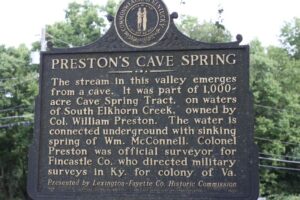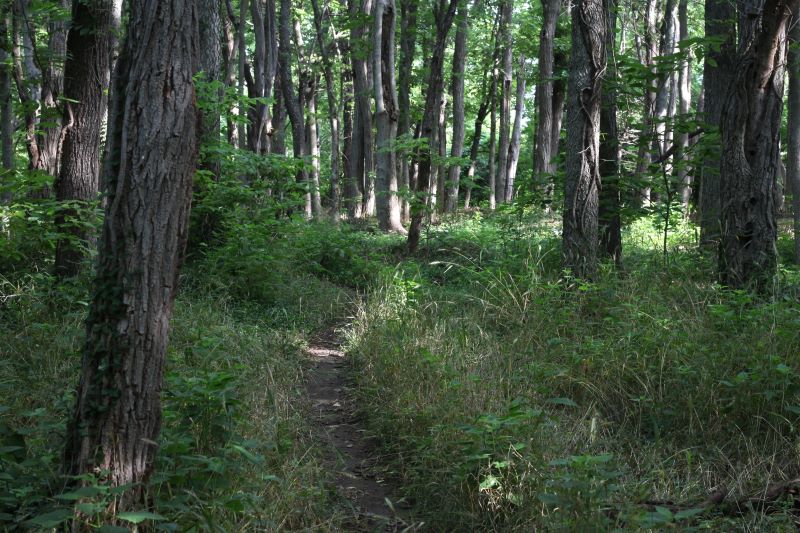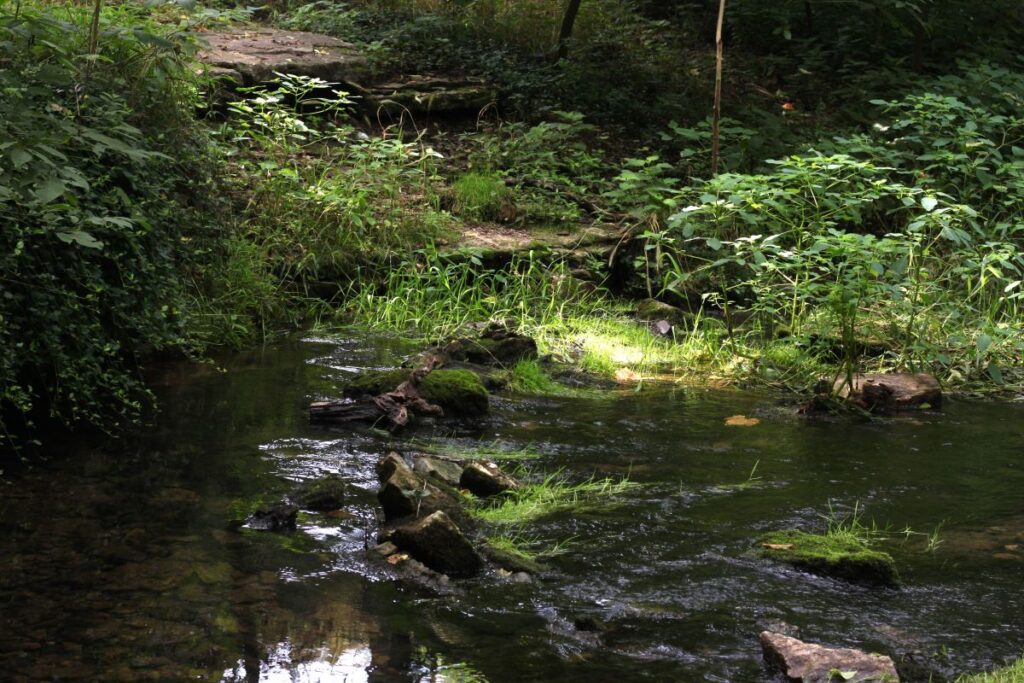Preston’s Springs Park is unique among Lexington’s 100+ city parks. It does not have a single basket ball hoop, swing set, picnic table or even a bench. There is no asphalted walking path, not even a parking lot. A historic marker at 1937 Dunkirk Drive hints at its existence, and that is it for amenities. This narrow, entirely wooded area encompasses the flood plain of a naturally flowing creek in the Wolf Run watershed. The creek emerges from a cave that connects its waters to McConnel Springs further up in the watershed. It empties into Wolf Run near the intersection of New Circle Road and Old Frankfort Pike. The creek may constitute the longest stretch of water in Lexington that has not been altered through engineering to accommodate urban planning. Nor has the creek carved a deep gully for itself as our city streams commonly do when their banks are stripped of the woody vegetation that prevents erosion. It is the unaltered meandering flow of water over limestone bedrocks, so characteristic of natural waterways in the Bluegrass, that makes this creek and its park into a hidden gem.
This narrow, entirely wooded area encompasses the flood plain of a naturally flowing creek in the Wolf Run watershed. The creek emerges from a cave that connects its waters to McConnel Springs further up in the watershed. It empties into Wolf Run near the intersection of New Circle Road and Old Frankfort Pike. The creek may constitute the longest stretch of water in Lexington that has not been altered through engineering to accommodate urban planning. Nor has the creek carved a deep gully for itself as our city streams commonly do when their banks are stripped of the woody vegetation that prevents erosion. It is the unaltered meandering flow of water over limestone bedrocks, so characteristic of natural waterways in the Bluegrass, that makes this creek and its park into a hidden gem.

One might think that the woods flanking the creek would have retained a forest floor covered with our characteristic wildflowers, ferns and native shrubs asserting themselves along the creek or in the occasional small clearing. Unfortunately, that is not the case at Preston’s Springs. Just like other unmaintained natural areas in Fayette County, this park has been invaded by wintercreeper and bush honeysuckle on a massive scale. The park was established in 1988 when the city bought the land from a private owner. Apparently, it remained entirely unmanaged. When Roberta Burnes and John Walker “discovered” it, they found what was essentially a dumping ground for industrial debris, car engines, couches, refrigerators and all the other detritus of modern consumer life. Beginning around 2002, Roberta took it upon herself to organize volunteers and a series of dumpsters to get the debris out of there over a number of years. It was an audacious and huge undertaking. A follow-up effort by James Dickie and Bruce Hutchinson continued the debris cleanup. Later, other individuals and groups began to tackle the invasive plants. The Friends of

Wolf Run received a succession LFUCG Water Quality Incentive Grants to employ an ecological restoration firm, Skybox Inc, owned by Gary Libby, to work in the flood plain removing bush honeysuckle and introducing plants native to Bluegrass riparian zones. For the last six years, a small volunteer group, led by Jerry Weisenfluh, has removed invasives and planted natives on the slopes higher up. This group, which includes Wild Ones members Jannine Baker and Jerry Davis, meets once a week, works year-round and has made a tremendous impact already, with clear indicators of what the entire park may look like some day in the future. Again, Preston’s Springs is unique. The LFUCG Division of Parks and Recreation is only minimally involved in its operation, though the park is officially under its umbrella. Decisions about the park are essentially made by the volunteer and professional ecologists who work with the Friends of Wolf Run. These small groups have experimented with invasive plant control and developed effective approaches to honeysuckle and wintercreeper removal. They have engaged in interesting and fruitful discussions about the plants that should grow in our inner Bluegrass region. And while their work is of great benefit to the Cardinal Valley neighborhood, the city of Lexington and our local natural restoration community, they carry out their tasks without a great deal of fanfare.

Beate Popkin
